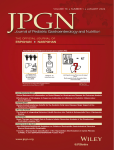Esophagitis: Optimizing Diagnostic Yield by Biopsy Orientation
ABSTRACT
Objectives:
There is poor correlation between gastroesophageal reflux (GER) symptoms, intraesophageal pH monitoring and endoscopic or histologic appraisal of esophagitis in the pediatric age group. To optimize the diagnosis of childhood esophagitis, histologic evaluation of esophageal pinch and suction biopsies after orientation were compared.
Methods:
Thirty consecutive children with GER, age range 6 months to 7 years, were prospectively evaluated with upper gastrointestinal endoscopy and biopsy. Three pinch biopsies and one suction biopsy were examined after different methods of biopsy orientation. The suction biopsy orientated with ×10 magnification represented the standard against which the pinch biopsies were compared.
Results:
After suction biopsy with tissue orientation using ×10 magnification 90% of biopsies were adequate for histologic appraisal. Ninety-three percent of esophageal pinch biopsies orientated with ×10 magnification were adequate for analysis. After pinch biopsy orientated without magnification 90% of biopsies were suitable for histologic appraisal. Finally, in the pinch biopsy group without formal orientation, only 63% of the biopsies were adequate for histologic analysis and diagnosis of esophagitis.
Conclusion:
Orientation of esophageal pinch biopsies improves histologic appraisal and hence increases the diagnostic yield of esophagitis in children with GER. The tissue fragments can be easily orientated in the endoscopy room before placement in fixative.




